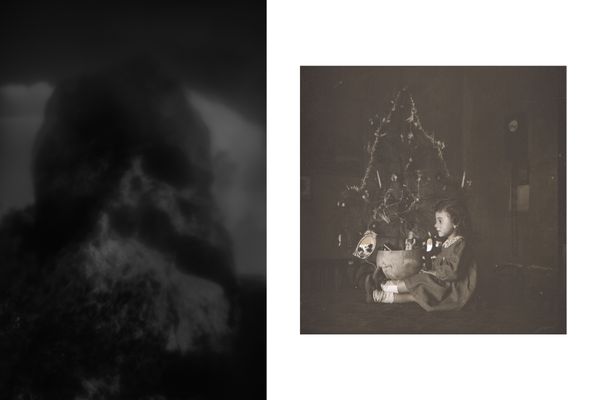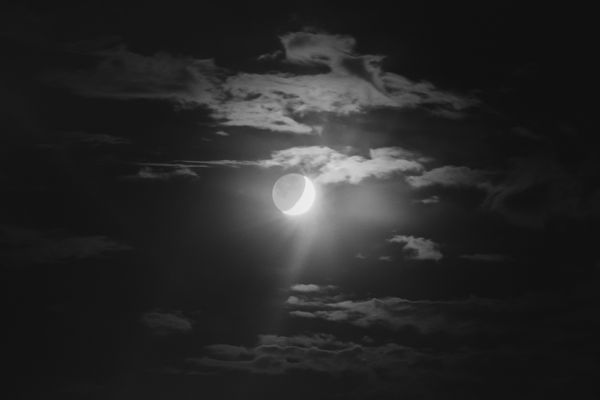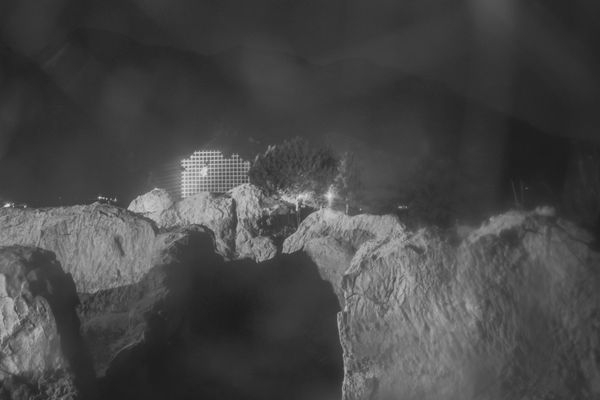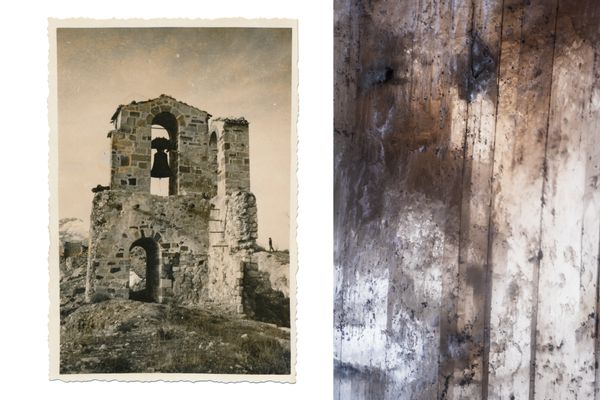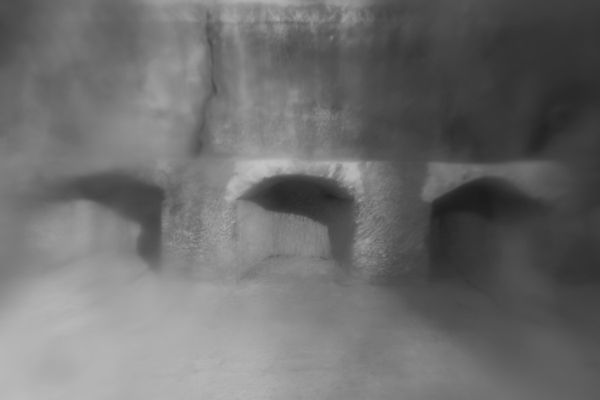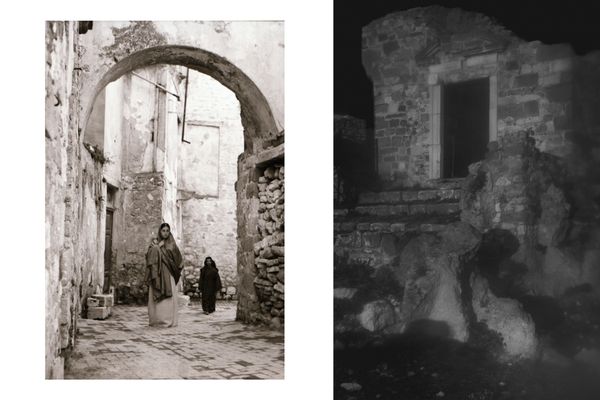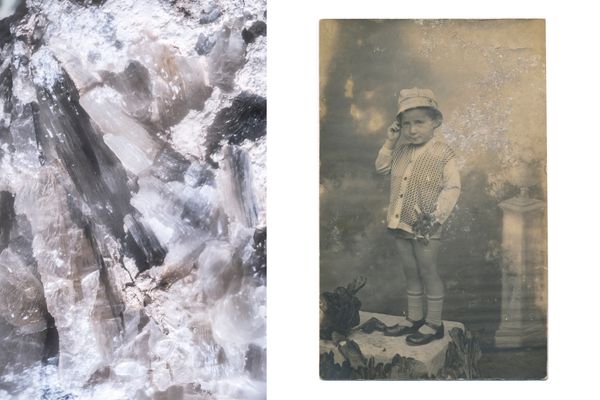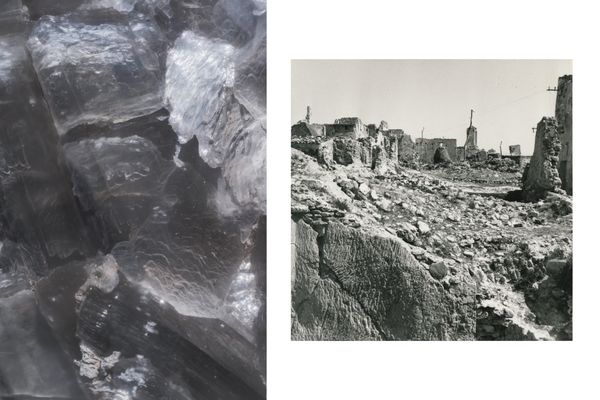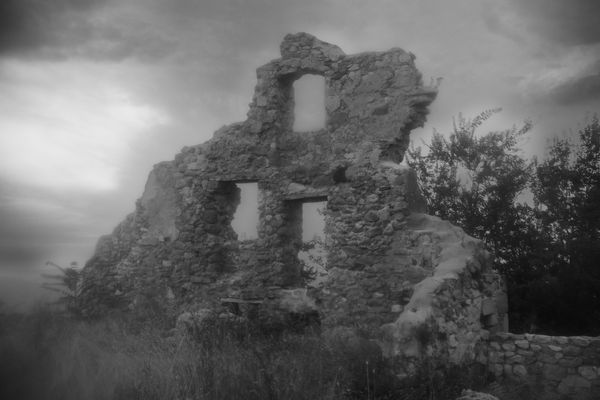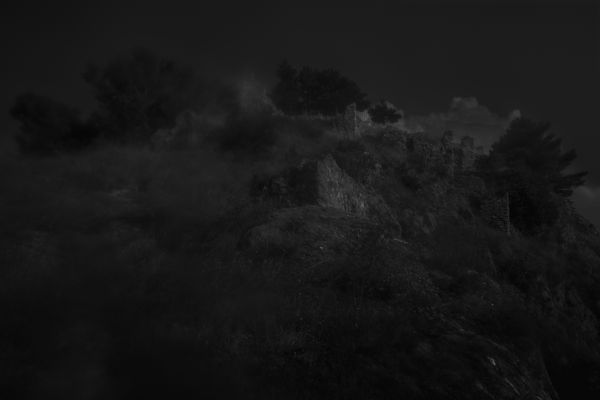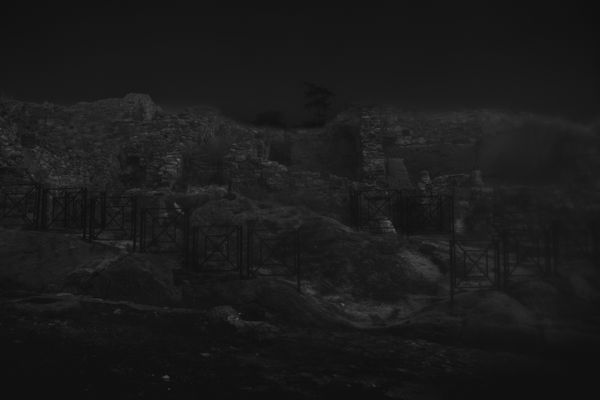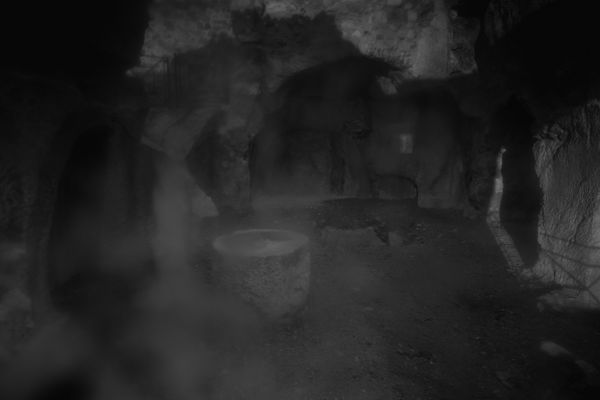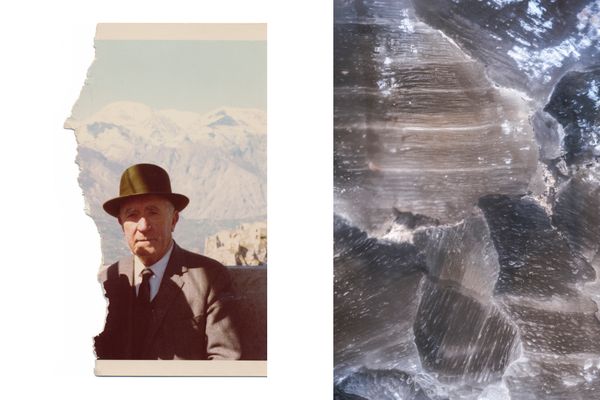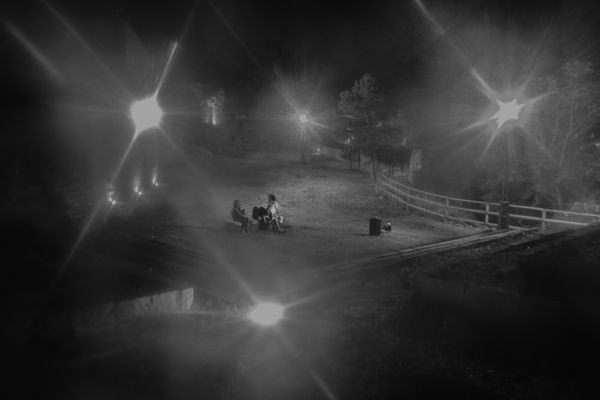Selenite - The Stone of the Moon
-
Dates2018 - Ongoing
-
Author
- Topics Fine Art, Documentary, Archive, Social Issues, War & Conflicts
- Location Gessopalena, Italy
In the present body of work I have set out to assemble a filter made of selenite – crystalline mineral gypsum – and to use it to shed new light on the vestiges and the war-torn history of the old-town of Gessopalena (Italy), whose habitations are dug into the gypsum rock itself.
In the present project I have set out to assemble a filter made of selenite – crystalline mineral gypsum – and to use it to shed new light on the vestiges and the war-torn history of the old-town of Gessopalena (Italy), whose habitations are dug into the gypsum rock itself.
Razed to the ground in 1943 by the WWII when the Gustav Line ran across it, Gessopalena is also my hometown and a place from which I moved away. Like personal relationships, gypsum shows translucency, opacity, and color. As such, and forever fixed in the geology of our common place of origin, it remains an allegory of: 1/ the traumatic memories of a population torn by the war; 2/ the ambiguous relationship of my contemporaries with today’s neo Fascist narratives; and, 3/ the dealings, connections, and exchanges with locals and with my family members. I have combined the resulting body of work with my family archive. I juxtaposed the archive photos to the diverse gypsum crystals of the town. In so doing, I tried to put everything together into some kind of cohesive entity.
After the war ended, the survived population tried to find new shelter in the destroyed village, as this was central to their history and identity. They eventually rebuilt a modern borough nearby, and the old-town became a ghost village. Therefore, the present project serves also as a meditation on the relationship between the local cultural identity, the city of today, and its history of urbanisation.
Employing a selenite filter sabotages all optical properties of modern-day lenses. I do so on purpose and embrace the imperfections. I feel the blurry images coming out the selenite filter can help me in bearing witness to the lost way of life of the town and to its bygone subculture. Literally taken from the territory being represented, I want the medium to speak about our common place of origin.
The process was inspired by a geological feature of the territory. Known in the Ancient Rome as Terrae Gypsi, the town stands on a gypsum outcrop. The gypsum stone found there exhibits so obvious crystalline structure that the town was also known as Preta Lucente, or Shining Stone.
I print this body of work on satin paper, so that it can resemble the gypsum. And I toned in blue some of its images to reflect the feeling to the touch of such stone. Gypsum, in fact, has natural thermal insulating properties; and, as a result, all its varieties feel cold to the touch.
